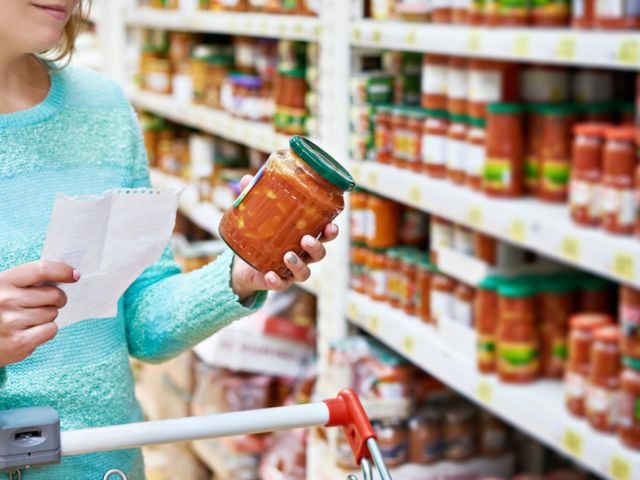
Memorial Day weekend, the gateway to summer, is almost here – pools are opening, and people are grilling, hosting barbecues and enjoying picnics.
If you’re planning an event with tasty food, make sure what you serve isn’t full of potentially harmful chemicals or contaminated with bacteria and pesticides.
Chips and crackers
Most of us already know snacks like chips and crackers aren’t the healthiest choices. What you may not realize is that, aside from excess sodium, many of these crunchy treats also contain potentially harmful food additives.
The preservative TBHQ can be found in many cracker and chip varieties, including Cheez It Baked Snack Crackers and Takis Fuego Hot Chili Pepper & Lime Tortilla Chips. Studies show TBHQ may harm the immune system and decrease the effectiveness of vaccines.
TBHQ isn’t the only concerning preservative found in these snacks. Butylated hydroxytoluene, or BHT, is also often used in chips and crackers. It’s a possible human carcinogen and can be found in products like Bugles Original chips and Townhouse Flatbread Crisps.
Salty snacks also often contain food dyes and color additives, like Red 40, which can be found in Takis Fuego Hot Chili Pepper & Lime Tortilla Chips. It’s been linked to children’s behavioral difficulties.
Pie and ice cream
Pies may be the quintessential dessert for American holidays. And frozen or premade, they’re an easy dessert option. But many contain unwanted and potentially harmful additives.
Some are made with preservatives like TBHQ, which can be found in Marketside Chocolate Creme Pie. Propyl paraben, found in Mike's Pies Mango Lime, may cause developmental and reproductive harm.
And if you plan to make your own using premade pie filling, check the label to make sure it doesn’t contain any artificial food dyes of concern, such as Red 40.
Thinking of having that pie à la mode? There’s more to worry about when it comes to ice cream than just the sugar it contains. Many ice creams found on supermarket shelves also contain TBHQ. Artificial food dyes like titanium dioxide are also added to many ice creams.
Meat and alternative meat
If you’re serving meat as the main course for your cookout, choose carefully.
EWG analyzed more than 47,000 federal government lab tests of bacteria on supermarket meat in 2018 and found that almost 80 percent contain superbugs, or antibiotic-resistant bacteria. You can help protect yourself and your friends and family by choosing organic meat or meat raised without antibiotics.
If you’re looking to decrease your meat consumption, there are plenty of delicious, alternative protein choices, like bean chili, sautéed chickpeas and portobello mushroom “steaks.”
Plant-based diets are often healthier than meat-heavy diets, and they reduce your climate footprint, because meat production can emit large amounts of greenhouse gases.
Plenty of produce
Healthy diets require a combination of fruits and vegetables, regardless of how they’re grown. But if you want to lower your pesticide intake, you can use our Dirty Dozen™ and Clean Fifteen™ guides to help you choose the fruits and veggies that are best to eat organic.
Numerous peer-reviewed scientific studies show that eating produce high in pesticide residue, like the items on our Dirty Dozen list, increases the risk of certain health harms. Choosing organic instead can almost immediately reduce the amounts of residues in a person’s body.
What can I do?
TBHQ, BHT, propyl paraben, titanium dioxide and artificial food dyes like Red 40 are all allowed for use in our food, despite concerns about how they harm our health. Congress is considering two bills that could help to improve food safety reviews and assess those risks.
The Food Chemical Reassessment Act of 2021, by Rep. Jan Schakowsky (D-Ill.), would help bolster our food regulatory system. If enacted, it would create an Office of Food Safety Assessment within the Food and Drug Administration to reassess chemicals that entered the food supply chain through legal loopholes or were reviewed by the FDA decades ago. The bill identifies 10 chemicals for immediate reassessment, including TBHQ, titanium dioxide, BHT and propyl paraben.
Rep. Rosa DeLauro (D-Conn.) introduced the Toxic-Free Food Act to direct the FDA to narrow a loophole that lets companies, rather than the FDA, decide whether food chemical additives are safe to eat.
In the meantime, to avoid harmful food chemicals, read the ingredients label on products before you purchase and check for any of these additives. You can also use our Food Scores database to help you find alternative products that don’t contain harmful chemicals.
###
The Environmental Working Group is a nonprofit, non-partisan organization that empowers people to live healthier lives in a healthier environment. Through research, advocacy and unique education tools, EWG drives consumer choice and civic action.



